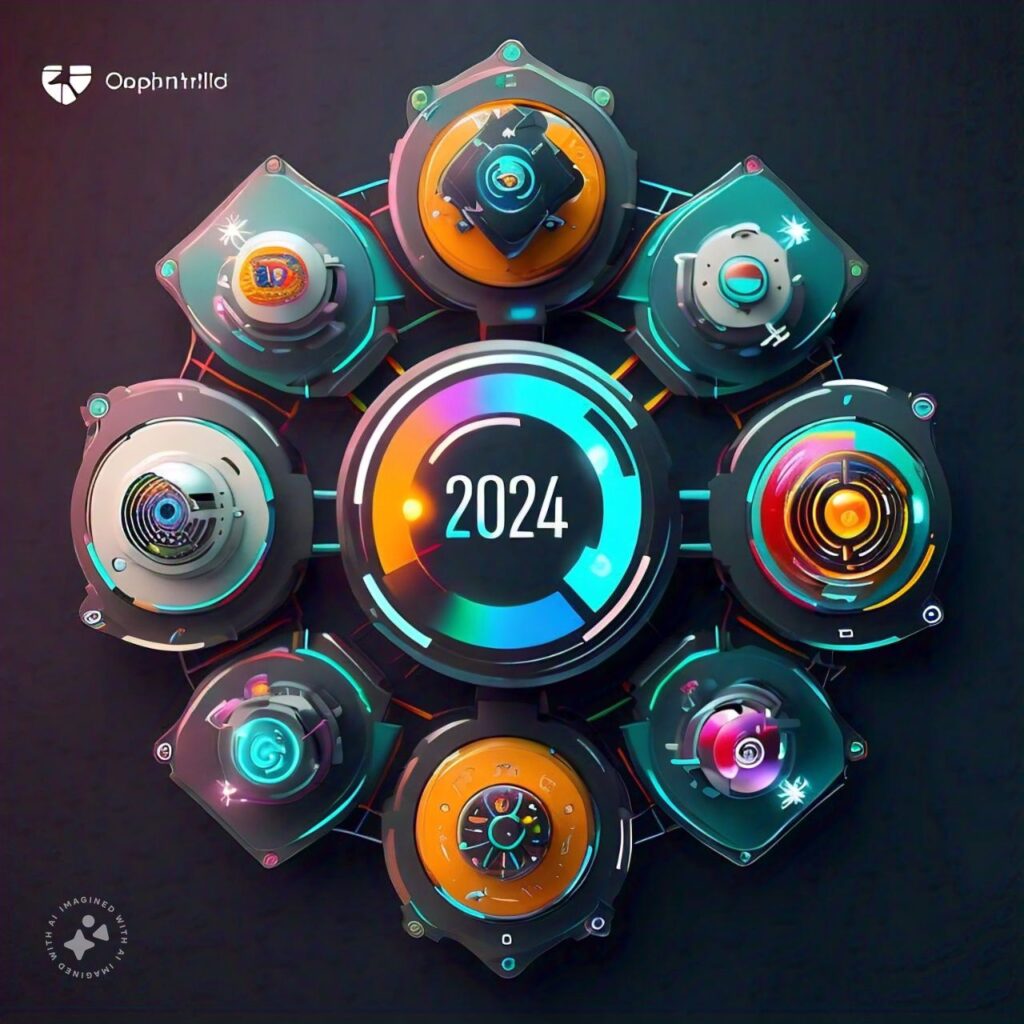The landscape of deep learning frameworks has evolved significantly over the years, with numerous tools available to tackle image recognition tasks. As we navigate through 2024, selecting the right framework is crucial for optimizing performance, ease of use, and scalability. Here’s an in-depth look at some of the top deep learning frameworks for image recognition this year, detailing their features, benefits, and best use cases.
TensorFlow: The Versatile Powerhouse
TensorFlow, developed by Google Brain, has long been a cornerstone in the deep learning ecosystem. Its versatility makes it a preferred choice for a variety of image recognition tasks. TensorFlow supports a broad range of functionalities, from building simple models to complex, state-of-the-art architectures.
Key Features:
- Flexible Architecture: TensorFlow’s architecture supports both high-level APIs (like Keras) and low-level operations, making it adaptable to different levels of expertise and project requirements.
- TensorFlow Lite: This tool is designed for deploying models on mobile and edge devices, optimizing performance and efficiency in constrained environments.
- TensorFlow Extended (TFX): TFX facilitates the deployment of production-ready models with scalable data pipelines and model management tools.
Advantages:
- Wide Adoption and Community Support: TensorFlow has a large user base and extensive community support, providing a wealth of resources, tutorials, and third-party tools.
- Robust Ecosystem: The framework includes tools for visualization (TensorBoard), model serving (TensorFlow Serving), and distributed training.
Best For: TensorFlow is ideal for both beginners and experienced developers working on a wide range of image recognition tasks, including real-time applications and production environments.
PyTorch: The Research Favorite
PyTorch, developed by Facebook’s AI Research lab, has become a favorite among researchers due to its dynamic computation graph and intuitive design. PyTorch’s approach to deep learning focuses on ease of experimentation and flexibility.
Key Features:
- Dynamic Computation Graphs: PyTorch’s ability to create computation graphs dynamically facilitates easier debugging and modification of models during runtime.
- GPU Acceleration: PyTorch offers strong support for GPU acceleration, making it efficient for training large-scale models.
- PyTorch Lightning: This high-level interface simplifies the training process by abstracting away boilerplate code, allowing researchers to focus on model design and experimentation.
Advantages:
- User-Friendly Design: PyTorch’s syntax and functionality are designed to be more intuitive, which helps accelerate the development and experimentation process.
- Strong Research Community: The framework is widely used in the research community, leading to frequent updates and cutting-edge innovations.
Best For: PyTorch is highly recommended for researchers and practitioners who need to develop and test novel image recognition models quickly and efficiently.
Keras: The User-Friendly Framework
Keras, now a high-level API within TensorFlow (tf.keras), is renowned for its user-friendly interface. It abstracts much of the complexity involved in building deep learning models, making it an excellent choice for those new to the field.
Key Features:
- Simple API: Keras provides a straightforward and concise API for defining and training models, which speeds up the development process.
- Pre-Built Models: It offers a variety of pre-trained models and layers, enabling users to leverage transfer learning and fine-tuning with minimal effort.
- Integration with TensorFlow: As part of TensorFlow, Keras benefits from TensorFlow’s powerful backend and extensive ecosystem.
Advantages:
- Rapid Prototyping: The simplicity of Keras allows for rapid prototyping and experimentation, which is beneficial for iterative development.
- Ease of Use: Its clear and readable code makes it accessible for newcomers while still being powerful enough for more experienced users.
Best For: Keras is ideal for beginners who want to quickly build and test image recognition models, as well as for those who need to develop models efficiently using pre-built components.
4. MXNet: The Scalable Solution
Apache MXNet distinguishes itself with its scalability and efficiency, making it suitable for large-scale image recognition projects and production environments. Developed by the Apache Software Foundation, MXNet supports multiple languages and offers robust performance.
Key Features:
- Scalability: MXNet’s design allows for seamless scaling across multiple GPUs and machines, making it well-suited for handling large datasets and complex models.
- Flexible Programming Model: It supports both imperative and symbolic programming, providing flexibility in model design and training.
- Multi-Language Support: MXNet offers APIs for various languages, including Python, Scala, and Julia, which can cater to diverse development preferences.
Advantages:
- Efficient Resource Utilization: MXNet’s efficiency in resource usage and distributed computing capabilities enhance its performance for large-scale applications.
- Good Documentation and Community Support: Although not as large as TensorFlow or PyTorch, MXNet’s community is active, and the framework is well-documented.
Best For: MXNet is best suited for large-scale image recognition projects requiring high performance and scalability, particularly in production environments.
Fastai: The Practical Tool for Rapid Development
Fastai, built on top of PyTorch, focuses on practical machine learning and rapid development. It provides high-level abstractions that simplify the process of building and training deep learning models.
Key Features:
- High-Level Abstractions: Fastai offers pre-built components and functions that make it easier to implement and experiment with advanced image recognition models.
- Focus on Practicality: The framework emphasizes ease of use and practical implementations, helping users achieve results quickly with less code.
- Integration with PyTorch: Fastai benefits from PyTorch’s underlying capabilities while offering additional tools and features for efficient model development.
Advantages:
- Accelerated Development: Fastai’s high-level abstractions enable rapid experimentation and model development, which is beneficial for prototyping and iterative design.
- User-Friendliness: The framework’s design and documentation are geared towards making deep learning accessible and practical for a wide range of users.
Best For: Fastai is ideal for practitioners and developers who need to quickly build and experiment with image recognition models, leveraging both practical tools and PyTorch’s capabilities.
Conclusion
Choosing the right deep learning framework for image recognition in 2024 involves evaluating your specific needs, from research and development to production deployment. TensorFlow and PyTorch remain top choices due to their flexibility and broad capabilities, while Keras offers simplicity and ease of use. MXNet excels in scalability, and Fastai provides practical tools for rapid development. By considering the unique strengths of each framework, you can select the one that best aligns with your project goals and technical requirements.


